-
 Bitcoin
Bitcoin $99,594.2189
-3.59% -
 Ethereum
Ethereum $2,188.5793
-9.00% -
 Tether USDt
Tether USDt $1.0001
-0.02% -
 XRP
XRP $1.9745
-5.82% -
 BNB
BNB $608.9511
-3.73% -
 Solana
Solana $130.4575
-5.93% -
 USDC
USDC $1.0000
0.01% -
 TRON
TRON $0.2637
-3.59% -
 Dogecoin
Dogecoin $0.1493
-5.97% -
 Cardano
Cardano $0.5322
-6.72% -
 Hyperliquid
Hyperliquid $33.9044
3.33% -
 Bitcoin Cash
Bitcoin Cash $449.6411
-5.46% -
 UNUS SED LEO
UNUS SED LEO $8.9629
0.43% -
 Sui
Sui $2.3943
-8.35% -
 Chainlink
Chainlink $11.4402
-7.83% -
 Stellar
Stellar $0.2241
-6.49% -
 Avalanche
Avalanche $16.1489
-4.24% -
 Toncoin
Toncoin $2.7182
-5.94% -
 Shiba Inu
Shiba Inu $0.0...01040
-5.72% -
 Litecoin
Litecoin $78.7882
-4.07% -
 Ethena USDe
Ethena USDe $1.0004
-0.01% -
 Hedera
Hedera $0.1305
-7.45% -
 Monero
Monero $297.0030
-5.32% -
 Dai
Dai $0.9997
-0.02% -
 Polkadot
Polkadot $3.1834
-6.03% -
 Bitget Token
Bitget Token $3.9788
-7.03% -
 Uniswap
Uniswap $6.1327
-10.62% -
 Pepe
Pepe $0.0...08689
-8.30% -
 Pi
Pi $0.4826
-9.65% -
 Aave
Aave $219.8043
-9.69%
How to interpret the CCI bottom divergence signal? Is it a buying opportunity?
CCI bottom divergence signals a potential buying opportunity when price hits new lows but CCI forms higher lows, yet confirm with other indicators and market context.
May 24, 2025 at 12:49 pm
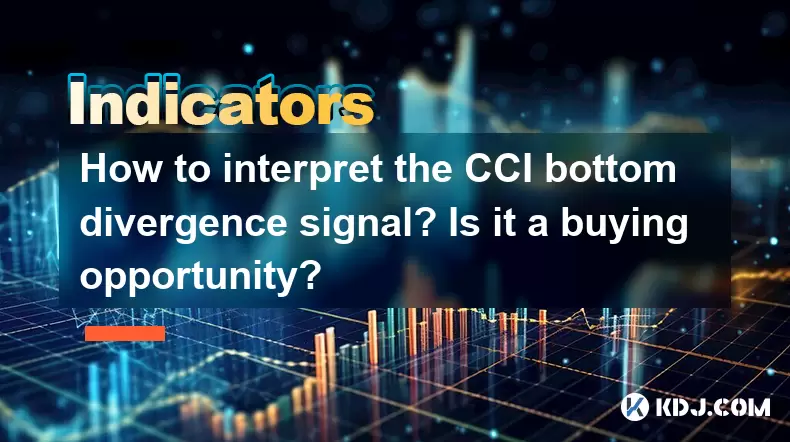
The Commodity Channel Index (CCI) is a versatile technical indicator used by traders to identify potential trend reversals and overbought or oversold conditions in the cryptocurrency market. One of the advanced techniques used with CCI is the identification of bottom divergence signals, which can be particularly intriguing for traders looking for buying opportunities. In this article, we will delve into how to interpret the CCI bottom divergence signal and whether it should be considered a buying opportunity.
Understanding the CCI Indicator
Before diving into the specifics of bottom divergence, it's essential to understand the basics of the CCI indicator. The CCI measures the deviation of a cryptocurrency's price from its statistical average. The formula for CCI is:
[ \text{CCI} = \frac{\text{Price} - \text{SMA}}{\text{0.015} \times \text{Mean Deviation}} ]
Where:
- Price is the typical price, calculated as (High + Low + Close) / 3.
- SMA is the simple moving average of the typical price over a specified period.
- Mean Deviation is the mean deviation of the typical price from the SMA over the same period.
Typically, the CCI is plotted on a chart with a zero line, and readings above +100 indicate overbought conditions, while readings below -100 suggest oversold conditions.
What is Bottom Divergence?
Bottom divergence occurs when the price of a cryptocurrency makes a new low, but the CCI fails to confirm this new low by making a higher low. This discrepancy between the price and the CCI can be a signal that the bearish momentum is weakening, and a potential reversal to the upside might be on the horizon.
Identifying CCI Bottom Divergence
To identify a CCI bottom divergence signal, follow these steps:
- Observe the price action: Look for a situation where the price of the cryptocurrency forms a new lower low.
- Check the CCI: Simultaneously, check the CCI to see if it forms a higher low. This means that the CCI value at the second low should be higher than the CCI value at the first low.
- Confirm the divergence: Ensure that the divergence is clear and not just a minor discrepancy. The more significant the divergence, the stronger the signal.
Is CCI Bottom Divergence a Buying Opportunity?
The presence of a CCI bottom divergence can indeed be considered a potential buying opportunity, but it should not be the sole factor in making a trading decision. Here are some considerations:
- Confirmation with other indicators: Use other technical indicators like the Relative Strength Index (RSI), Moving Average Convergence Divergence (MACD), or volume indicators to confirm the potential reversal.
- Price action analysis: Look for bullish candlestick patterns, such as hammers or engulfing patterns, around the time of the divergence to reinforce the signal.
- Market context: Consider the broader market context, including overall trends and news events that could impact the cryptocurrency's price.
Practical Example of CCI Bottom Divergence
Let's walk through a practical example to illustrate how to spot and interpret a CCI bottom divergence signal:
- Step 1: Observe the price chart of Bitcoin (BTC) and note that the price drops to a new low of $28,000 on Day X.
- Step 2: Check the CCI on the same chart and observe that the CCI value at this low is -150.
- Step 3: A few days later, on Day Y, the price of BTC drops again, this time to a new low of $27,000.
- Step 4: At this new low, the CCI value is -120, which is higher than the previous low of -150.
- Step 5: This discrepancy indicates a bottom divergence, suggesting that the bearish momentum might be waning.
Trading Based on CCI Bottom Divergence
If you decide to trade based on a CCI bottom divergence signal, here are some steps to follow:
- Set entry points: Consider entering a long position when the price shows signs of reversal after the divergence, such as a bullish candlestick pattern or a breakout above a key resistance level.
- Set stop-loss orders: Place a stop-loss order below the recent low to manage risk. For example, if the recent low was $27,000, you might set the stop-loss at $26,500.
- Define take-profit levels: Set take-profit levels based on resistance levels or Fibonacci retracement levels. For instance, if the next resistance level is $30,000, you might set a take-profit order there.
Common Pitfalls and How to Avoid Them
While CCI bottom divergence can be a powerful signal, there are common pitfalls that traders should be aware of:
- False signals: Not every divergence leads to a reversal. Sometimes, the price might continue to fall despite the divergence. To mitigate this risk, use multiple indicators and wait for confirmation.
- Over-reliance on CCI: Relying solely on CCI can lead to missed opportunities or false signals. Always combine CCI with other technical and fundamental analyses.
- Ignoring market context: Failing to consider the broader market context can lead to poor trading decisions. Always stay informed about market trends and news events.
Frequently Asked Questions
Q1: Can CCI bottom divergence be used for short-term or long-term trading?
A1: CCI bottom divergence can be used for both short-term and long-term trading. For short-term trading, focus on shorter time frames like 1-hour or 4-hour charts. For long-term trading, consider daily or weekly charts. The key is to adjust the period of the CCI accordingly to match your trading horizon.
Q2: How can I improve the accuracy of CCI bottom divergence signals?
A2: To improve the accuracy of CCI bottom divergence signals, use them in conjunction with other technical indicators and price action analysis. For example, combining CCI with RSI and volume indicators can provide a more robust signal. Additionally, waiting for confirmation from bullish candlestick patterns or breakouts can enhance the reliability of the signal.
Q3: Are there any cryptocurrencies where CCI bottom divergence is more effective?
A3: CCI bottom divergence can be applied to any cryptocurrency, but it may be more effective in cryptocurrencies with higher liquidity and trading volumes, such as Bitcoin and Ethereum. These assets tend to have more reliable price data and are less susceptible to manipulation, making technical indicators like CCI more effective.
Q4: How should I adjust the CCI period for different market conditions?
A4: The standard period for CCI is 20, but you can adjust it based on market volatility and your trading style. In highly volatile markets, a shorter period like 14 might be more responsive to price changes. In less volatile markets, a longer period like 28 could provide more stable signals. Experiment with different periods to find what works best for your trading strategy.
Disclaimer:info@kdj.com
The information provided is not trading advice. kdj.com does not assume any responsibility for any investments made based on the information provided in this article. Cryptocurrencies are highly volatile and it is highly recommended that you invest with caution after thorough research!
If you believe that the content used on this website infringes your copyright, please contact us immediately (info@kdj.com) and we will delete it promptly.
- Altcoins Under Pressure: Cardano and XRP Face Critical Tests
- 2025-06-23 12:25:12
- Rare Coin Fever in Wiltshire: Auctions, Errors, and Olympic Gold!
- 2025-06-23 12:25:12
- XRP Price Under Pressure: War Fears and Market Sentiment
- 2025-06-23 12:30:12
- HAI Token Private Key Leak: What Happened and How to Stay Safe
- 2025-06-23 12:45:12
- Texas Goes All In: Bitcoin Reserve Signals Big State Embrace
- 2025-06-23 12:45:12
- Pi Network's Price Plunge: Crash, Scammer Accusations, and What's Next?
- 2025-06-23 13:05:12
Related knowledge
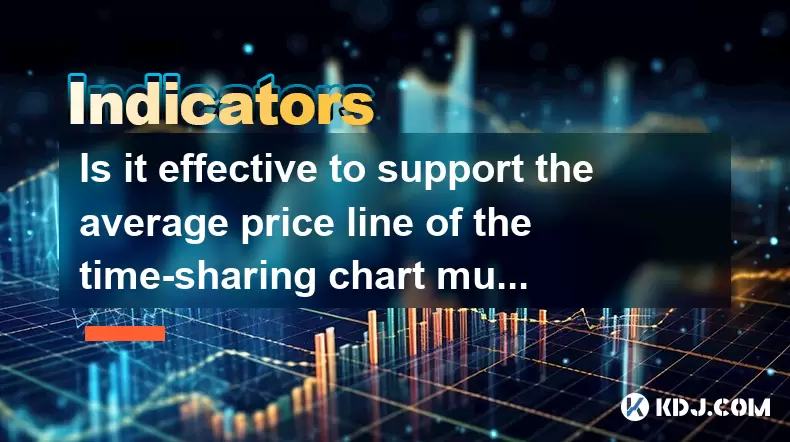
Is it effective to support the average price line of the time-sharing chart multiple times?
Jun 23,2025 at 01:36pm
Understanding the Average Price Line in Time-Sharing ChartsIn cryptocurrency trading, time-sharing charts refer to real-time price charts that display price movements over short intervals, often within a single trading day. Within these charts, the average price line, also known as the Volume Weighted Average Price (VWAP), is a commonly used technical i...
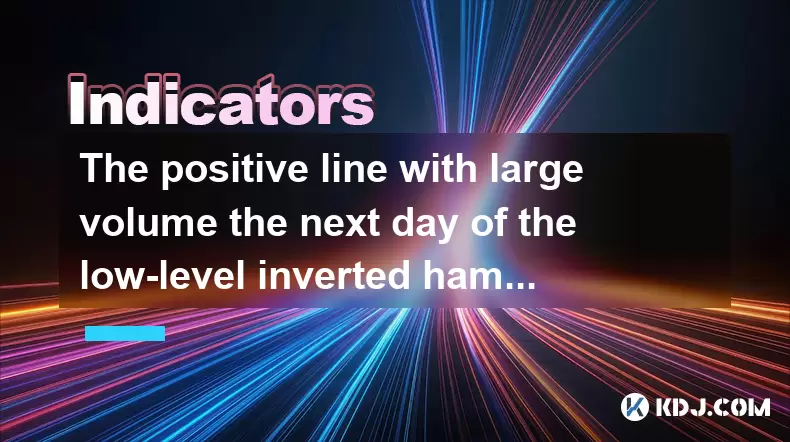
The positive line with large volume the next day of the low-level inverted hammer line confirms the reversal?
Jun 23,2025 at 01:21pm
Understanding the Low-Level Inverted Hammer LineThe inverted hammer line is a single candlestick pattern that typically appears at the end of a downtrend. It has a small real body near the bottom of the trading range and a long upper shadow, indicating that bulls attempted to push prices higher but were met with selling pressure. When this pattern forms...
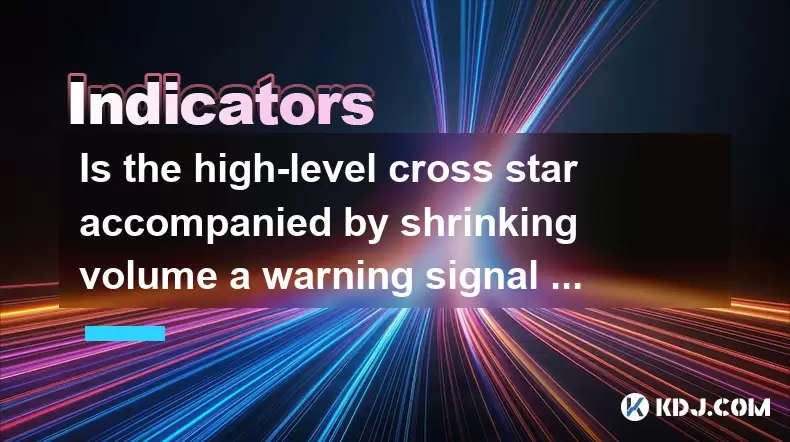
Is the high-level cross star accompanied by shrinking volume a warning signal of peaking?
Jun 23,2025 at 01:28pm
Understanding High-Level Cross Star PatternsIn the world of cryptocurrency trading, candlestick patterns are essential tools for technical analysis. One such pattern is the high-level cross star, which appears as a doji or near-doji candle at a significant resistance level. This pattern often indicates indecision in the market and can be interpreted as ...
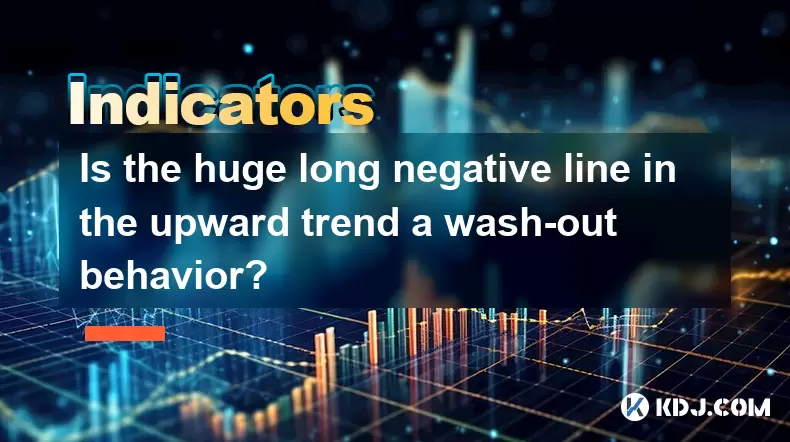
Is the huge long negative line in the upward trend a wash-out behavior?
Jun 23,2025 at 12:49pm
Understanding the Long Negative Candlestick in an Uprising TrendA long negative candlestick, often referred to as a long red or bearish candle, appearing during an upward trend can raise concerns among traders and investors. This pattern typically indicates a sudden and significant drop in price after a period of rising prices. It is often interpreted a...

Can the EXPMA golden cross stand on the 5-day line at the same time?
Jun 23,2025 at 11:42am
Understanding the EXPMA Indicator in Cryptocurrency TradingThe Exponential Moving Average (EXPMA) is a popular technical analysis tool used by cryptocurrency traders to identify trends and potential reversal points. Unlike simple moving averages, the EXPMA gives more weight to recent price data, making it more responsive to current market conditions. In...

Does the second surge in the RSI overbought zone induce more?
Jun 22,2025 at 08:35am
Understanding the RSI Overbought ZoneThe Relative Strength Index (RSI) is a momentum oscillator commonly used in technical analysis to measure the speed and change of price movements. It ranges from 0 to 100, with values above 70 typically considered overbought and values below 30 considered oversold. When the RSI enters the overbought zone for the firs...

Is it effective to support the average price line of the time-sharing chart multiple times?
Jun 23,2025 at 01:36pm
Understanding the Average Price Line in Time-Sharing ChartsIn cryptocurrency trading, time-sharing charts refer to real-time price charts that display price movements over short intervals, often within a single trading day. Within these charts, the average price line, also known as the Volume Weighted Average Price (VWAP), is a commonly used technical i...

The positive line with large volume the next day of the low-level inverted hammer line confirms the reversal?
Jun 23,2025 at 01:21pm
Understanding the Low-Level Inverted Hammer LineThe inverted hammer line is a single candlestick pattern that typically appears at the end of a downtrend. It has a small real body near the bottom of the trading range and a long upper shadow, indicating that bulls attempted to push prices higher but were met with selling pressure. When this pattern forms...

Is the high-level cross star accompanied by shrinking volume a warning signal of peaking?
Jun 23,2025 at 01:28pm
Understanding High-Level Cross Star PatternsIn the world of cryptocurrency trading, candlestick patterns are essential tools for technical analysis. One such pattern is the high-level cross star, which appears as a doji or near-doji candle at a significant resistance level. This pattern often indicates indecision in the market and can be interpreted as ...

Is the huge long negative line in the upward trend a wash-out behavior?
Jun 23,2025 at 12:49pm
Understanding the Long Negative Candlestick in an Uprising TrendA long negative candlestick, often referred to as a long red or bearish candle, appearing during an upward trend can raise concerns among traders and investors. This pattern typically indicates a sudden and significant drop in price after a period of rising prices. It is often interpreted a...

Can the EXPMA golden cross stand on the 5-day line at the same time?
Jun 23,2025 at 11:42am
Understanding the EXPMA Indicator in Cryptocurrency TradingThe Exponential Moving Average (EXPMA) is a popular technical analysis tool used by cryptocurrency traders to identify trends and potential reversal points. Unlike simple moving averages, the EXPMA gives more weight to recent price data, making it more responsive to current market conditions. In...

Does the second surge in the RSI overbought zone induce more?
Jun 22,2025 at 08:35am
Understanding the RSI Overbought ZoneThe Relative Strength Index (RSI) is a momentum oscillator commonly used in technical analysis to measure the speed and change of price movements. It ranges from 0 to 100, with values above 70 typically considered overbought and values below 30 considered oversold. When the RSI enters the overbought zone for the firs...
See all articles

























































































